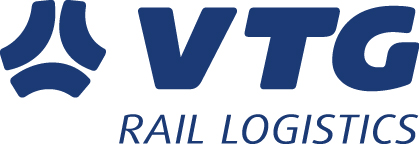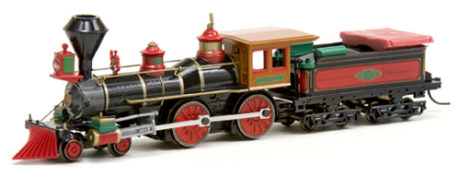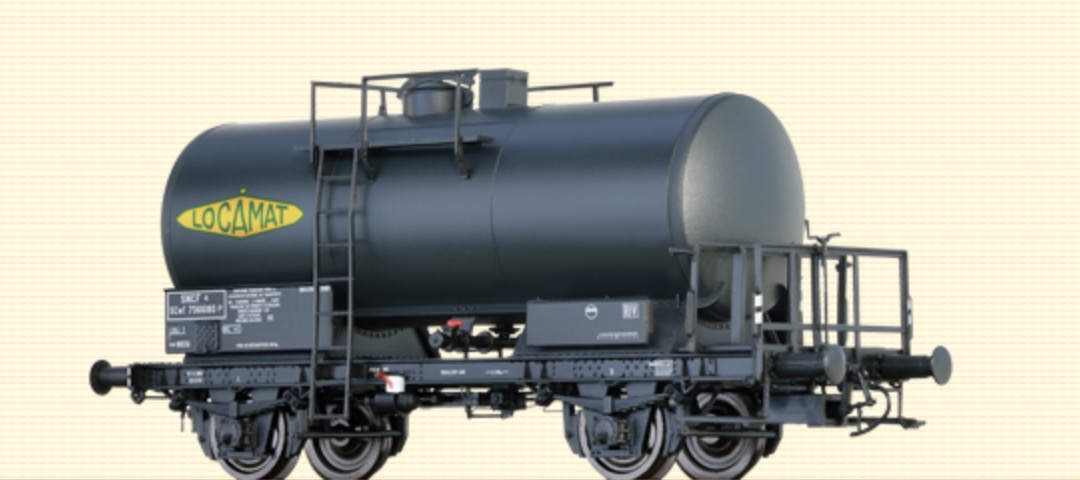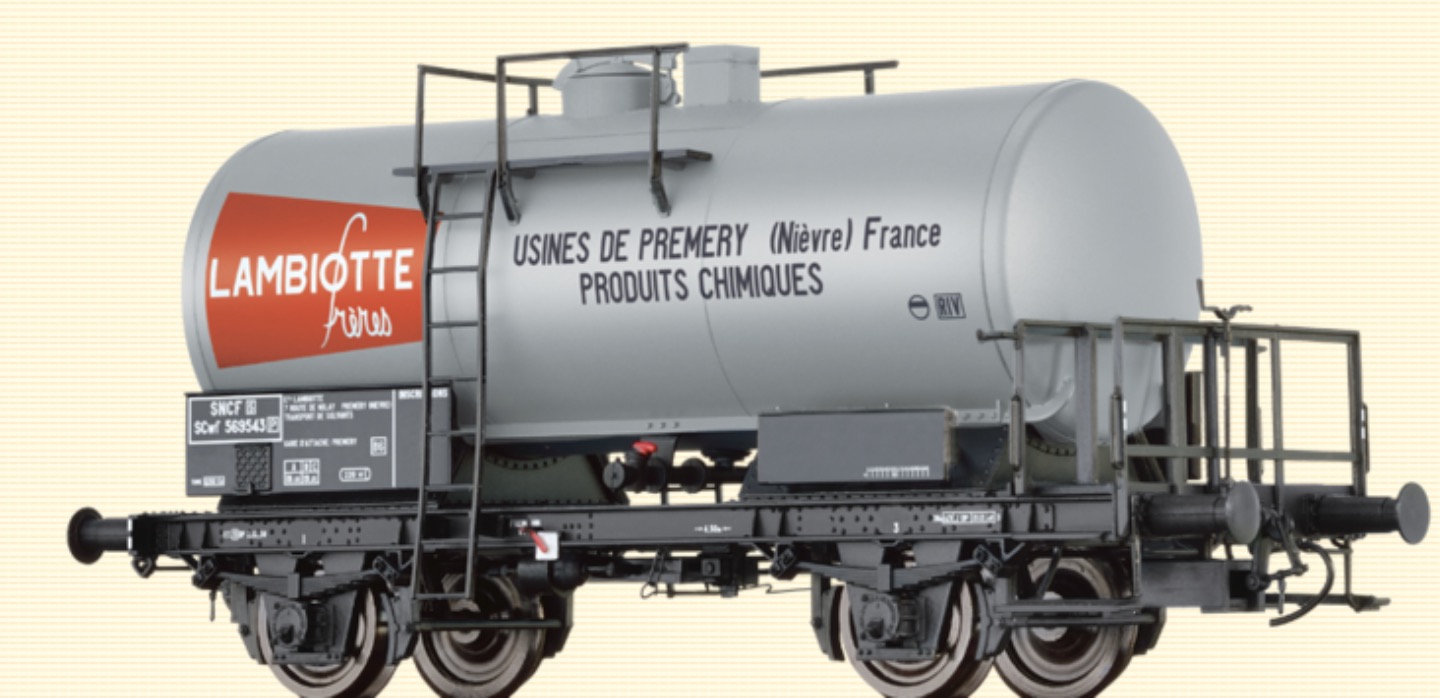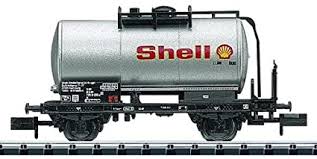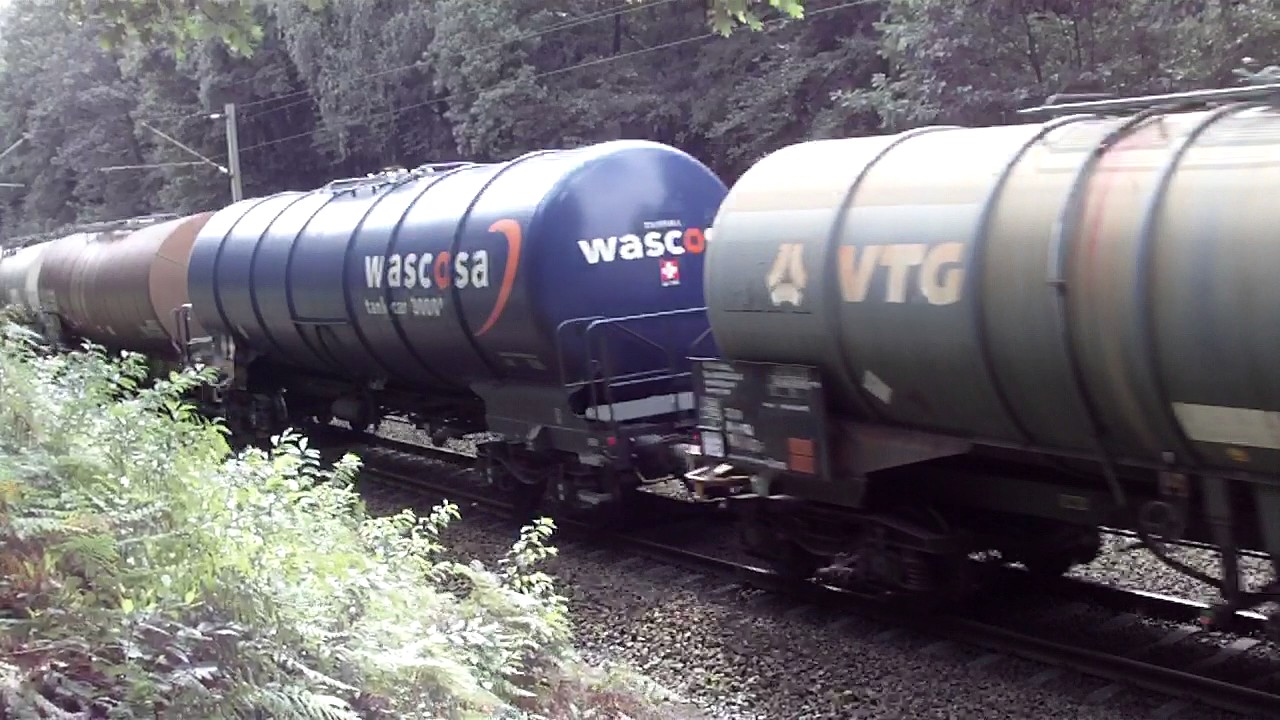Prototype History: Tank cars are a railroad staple. They have been around since the first half of the 20th century. These railcars carry a wide array of commodities, including liquid fertilizers, chemicals, fuel oils and asphalt, and food-grade oils. Tank cars can be pressurized or non-pressurized, insulated or non-insulated. Single dome cars carry only a single commodity at once. Food-service tank cars may be lined with stainless steel, glass, or plastic. Tank cars carrying dangerous goods are generally made of different types of steel, depending on the intended cargo and operating pressure. They may also be lined with rubber or coated with specialized coatings for tank protection or product purity purpose. The tank heads are also stronger to prevent ruptures during accidents.
The Zans petroleum railcar: The tank wagon is designed for the transportation of liquid chemical and petroleum products compliant with the tank code L4BH. The optimized tare weight and the payload capability leads to an effective transportation of medium density petroleum products (i.e. diesel). Different loading and unloading equipment fitted on the tank, can be adapted in accordance with customer requirements. The wagon design meets the requirements of RID, TSI, EN, UIC standards and has TEN RIV marking for traffic peration.
Capabilities: The tank is loaded/filled through the dome (fitted with flap cover secured with 4 screws). The tank is discharged through the lower side, through the discharge pipe DN 100. Bottom valve is operated through a mechanical bilateral operating device.
The Zans petroleum railcar: The tank wagon is designed for the transportation of liquid chemical and petroleum products compliant with the tank code L4BH. The optimized tare weight and the payload capability leads to an effective transportation of medium density petroleum products (i.e. diesel). Different loading and unloading equipment fitted on the tank, can be adapted in accordance with customer requirements. The wagon design meets the requirements of RID, TSI, EN, UIC standards and has TEN RIV marking for traffic peration.
Capabilities: The tank is loaded/filled through the dome (fitted with flap cover secured with 4 screws). The tank is discharged through the lower side, through the discharge pipe DN 100. Bottom valve is operated through a mechanical bilateral operating device.
Road Name History: Headquartered in Hamburg, VTG Aktiengesellschaft (VTG AG) is a publicly traded and leading international wagon hire and rail logistics company with around 80,000 railcars on its books at the current time – the biggest privately owned fleet in Europe. Customers benefit from close ties between VTG's three divisions: Railcar, Rail Logistics and Tank Container Logistics. This collaboration creates a powerful, results-driven platform for international freight transportation – a platform that delivers custom-tailored logistical solutions and possesses a wealth of expertise in the transportation of liquids and hazardous goods, where safety is of the essence.
The Group's wagon hire, wagon manufacturing and maintenance activities are complemented by a separate sales organization. In addition, VTG AG, its subsidiaries and its affiliates draw on the resources of various pool systems, as well as offering to manage external wagon fleets. Our tank containers comply with all relevant statutory norms, prescriptions and material requirements and are deployed for transportation by road, rail and sea. Our customers expect industry-specific solutions that reflect the quality and effectiveness of a true global player. Which is exactly what they get from VTG, every time.
A large number of respected companies across a broad spectrum of industries – chemicals, petroleum, automotive engineering and suppliers, the paper industry, you name it – take advantage of our services, concepts and products. VTG AG is an established player in the German and international transportation market. Its shares are traded on the Prime Standard segment of the Frankfurt Stock Exchange and quoted in the SDAX small cap index.
The Group's wagon hire, wagon manufacturing and maintenance activities are complemented by a separate sales organization. In addition, VTG AG, its subsidiaries and its affiliates draw on the resources of various pool systems, as well as offering to manage external wagon fleets. Our tank containers comply with all relevant statutory norms, prescriptions and material requirements and are deployed for transportation by road, rail and sea. Our customers expect industry-specific solutions that reflect the quality and effectiveness of a true global player. Which is exactly what they get from VTG, every time.
A large number of respected companies across a broad spectrum of industries – chemicals, petroleum, automotive engineering and suppliers, the paper industry, you name it – take advantage of our services, concepts and products. VTG AG is an established player in the German and international transportation market. Its shares are traded on the Prime Standard segment of the Frankfurt Stock Exchange and quoted in the SDAX small cap index.
Brand/Importer Information: Trix is a German company that originally made Trix metal construction sets. one of its co-founders was Stephan Bing, the son of the pioneer toy-maker industrialist Ignaz Bing. In 1935 the company began producing the electrically powered model trains that it became famous for, under the Trix Express label. Prior to the outbreak of World War II the Trix company produced a small range of fairly unrealistic AC powered three rail models running at 14 volts.
N gauge models under the Minitrix brand were made from the late 1960s mostly of European prototypes (German and British primarily). North American prototypes were also manufactured and marketed under the Aurora "Postage Stamp" brand; later these items were sold under the American Tortoise, Model Power and Con-Cor brands. Trix sometimes utilized North American consultants to aid in the design of this portion of the product line. The "Hornby Minitrix' brand was used in the 1980s for a short lived range of British outline models using the earlier product tooling.
Trix's owner in the 1980s and 1990s was Mangold, which went bankrupt in the late 1990s and Märklin purchased the assets in January 1997. In part, this purchase was a reflection of Märklin's need for added production capacity; Trix had been manufacturing certain items for Märklin in previous years. The purchase was also in response to the earlier purchase of the Karl Arnold company by the Italian company Rivarossi; Märklin were very keen to take over Trix market share in 2-rail H0 and especially Minitrix, until then Märklin had not marketed N gauge models. In 2003, Märklin introduced its first N gauge models under the well established Minitrix brand. A number Märklin H0 scale three-rail AC locomotives have also been introduced in two-rail DC versions under the Trix logo and many models are shared between the two brands.
From Wikipedia
N gauge models under the Minitrix brand were made from the late 1960s mostly of European prototypes (German and British primarily). North American prototypes were also manufactured and marketed under the Aurora "Postage Stamp" brand; later these items were sold under the American Tortoise, Model Power and Con-Cor brands. Trix sometimes utilized North American consultants to aid in the design of this portion of the product line. The "Hornby Minitrix' brand was used in the 1980s for a short lived range of British outline models using the earlier product tooling.
Trix's owner in the 1980s and 1990s was Mangold, which went bankrupt in the late 1990s and Märklin purchased the assets in January 1997. In part, this purchase was a reflection of Märklin's need for added production capacity; Trix had been manufacturing certain items for Märklin in previous years. The purchase was also in response to the earlier purchase of the Karl Arnold company by the Italian company Rivarossi; Märklin were very keen to take over Trix market share in 2-rail H0 and especially Minitrix, until then Märklin had not marketed N gauge models. In 2003, Märklin introduced its first N gauge models under the well established Minitrix brand. A number Märklin H0 scale three-rail AC locomotives have also been introduced in two-rail DC versions under the Trix logo and many models are shared between the two brands.
From Wikipedia
Item created by: gdm on 2018-10-19 10:58:26. Last edited by gdm on 2018-10-19 10:59:00
If you see errors or missing data in this entry, please feel free to log in and edit it. Anyone with a Gmail account can log in instantly.
If you see errors or missing data in this entry, please feel free to log in and edit it. Anyone with a Gmail account can log in instantly.




